Neocirrhites armatus
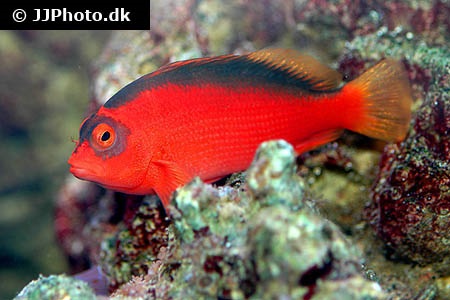
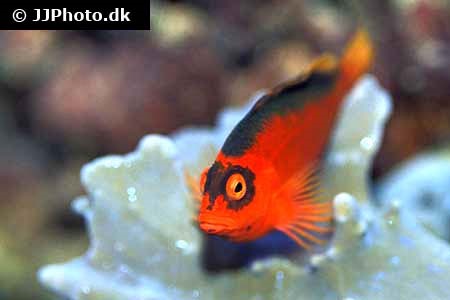

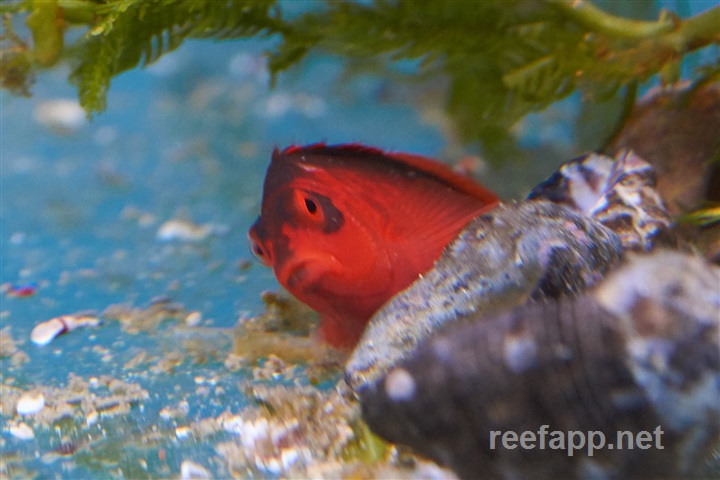
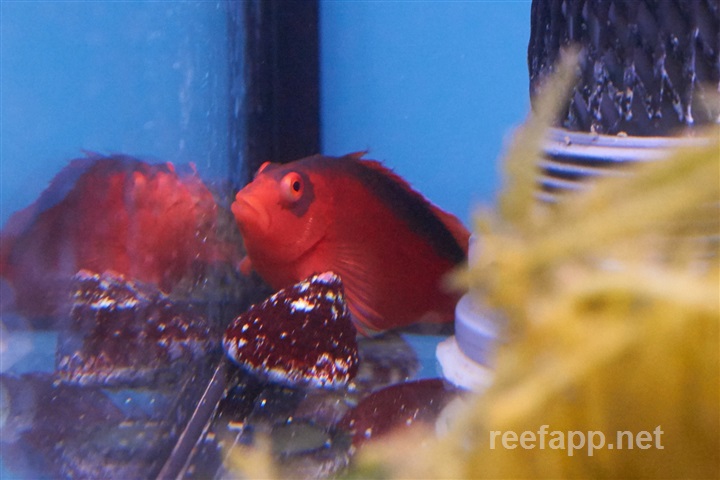
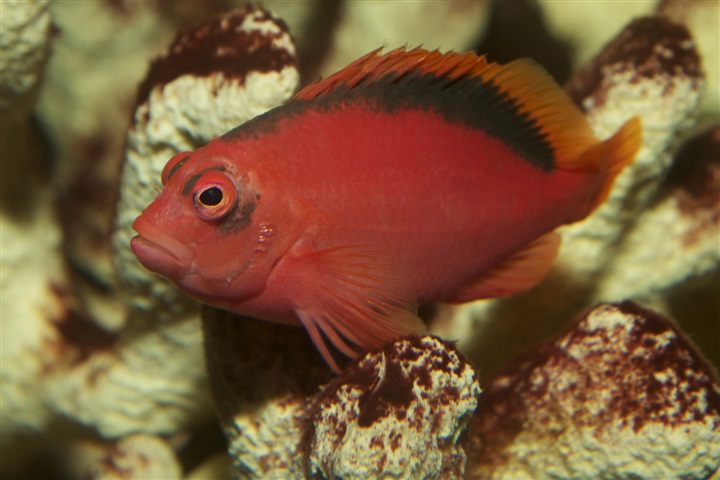
| Latin name | Neocirrhites armatus - Castelnau, 1873 |
|---|---|
| Local name | Flame hawkfish |
| Family | Cirrhitidae - Neocirrhites |
| Origin | Australia, Indonesia, East Pacific, Central/West Pacific |
| Max length | 9 cm (3.5") |
| Minimum volume |
100 l (26 gal) |
|---|---|
| Hardiness |
Hardy |
| Suitable for aquarium |
Suitable with care |
| Reef safe |
Reef safe with caution |
| Aggressiveness | Might be aggressive towards other species |
| Recommended |
Small crustaceans (Krill, mysis, artemia...) Zooplankton (Cyclops, pods...) |
|---|---|
| Mostly |
Larger crustaceans (Shrimp, crabs...) |
This species can be a threat for small fishes, crustaceans, worms, snails etc.
This species can be kept in a small tank, if it is specifically equipped to meet its needs.
It is recommended however, to keep it in an aquarium which is larger then described above.
In the aquarium the colour of this species can become matte.
Food with plenty of pigment and generally a varied diet of high quality can help alleviate colour loss.
This species often has a fun and interesting personality.
They can live as a pair provided they are introduced simultaneously.
This species needs good hiding places, for example, between live rocks.
This species can change gender from female to male.
When a male is needed, a female changes sex and takes on the role.
This species can be aggressive when kept together with fish that are very similar, or if they are not provided with adequate space.
Hawkfish stay still and wait for food most of the time, they are therefore suitable for smaller aquaria.
One must be aware that Hawkfishes can be very aggressive.
Very aggressive genera
The very aggressive species will sometimes attack many different types of fish, even the ones that are larger than themselves.
Cirrhitops
Cirrhitus
Paracirrhtes
Semi aggressive genera
The semi aggressive species are most threatening towards fish whose behaviour mimcks their own, and fish which are introduced after they have settled in.
Cirrhitichthys
Less aggressive genera
The less aggressive species are rarely threatening towards fish that which do not resemble them.
Cyprinocirrhites
Neocirrhites
Oxycirrhites
Larger Hawkfishes might eat small fish, shrimps etc. in the aquarium. Species of the Cyprinocirrhites and Neocirrhites genera are least likely to eat shrimps etc.
Hawkfish do not place many demands on their surroundings or water quality, as they are fairly hardy.
It is possible to keep several Hawkfish together, but sometimes they will suddenly begin to fight after some time in the aquarium.
This may be due to them changing gender so one can end up with two males.
| Aquarium trade | Yes |
|---|---|
| Distribution | Pacific Ocean: Ryukyu Islands to the Line Islands and Mangaréva, south to the Great Barrier Reef and the Austral Islands; Caroline, Mariana, and the Wake islands in Micronesia. |
| Danish common names |
Rød falkefisk |
| English common names |
Flame hawkfish |
Scott W. Michael. 2001. Basslets, Dottybacks & Hawkfishes: v. 2 (Reef Fishes) - TFH Publications / Microcosm Ltd. - (English)
James W. Fatherree. The Hawkfishes - Reefs Magazine - (English)
Bob Fenner. Hawkfishes, Family Cirrhitidae Part I, Part II, Part III - Wet Web Media - (English)

